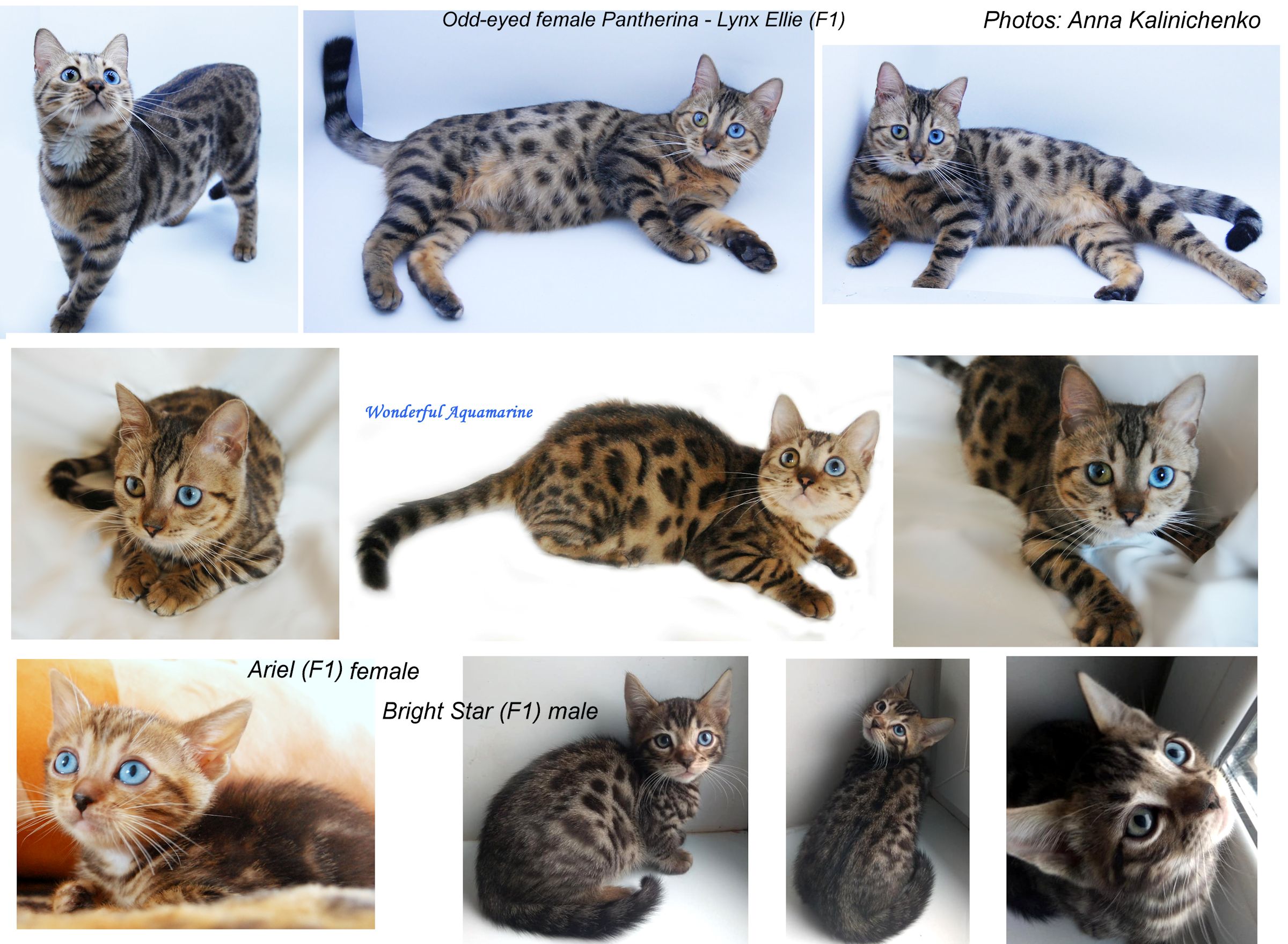
BLUE-EYED BREEDS - PANTHERINA (ROXI or SEYMOUR GENE)
PANTHERINA (ROXI or SEYMOUR GENE)
The idea of creating a unique cat resembling a panther (leopard) with blue or odd eyes, came from one of the founders of the Altai breed, Anna Kalinichenko, in 2016. The foundation cats were an Altai blue-eyed cat called Sapphire and two melanistic Bengal cats called Agatha and Bager. Sapphire and Agatha produced the first Pantherina, named Lynx Ellie. In 2020, the preliminary standard for the Pantherina breed was created and in 2021 this experimental breed began to gain popularity.

The Pantherina gives the impression of a graceful wild cat with spotted, rosetted or melanistic coat, or Toyger-style stripes, with any white restricted to tail-tip or feet. The large, wide-set, oval eyes should be deep blue or odd-eyed (one deep blue, the other emerald or amber) due to the altai dominant blue-eyes genes. Size is medium to very large, imposing in appearance, body is well-balanced, strong, muscular and flexible and the demeanour is active, energetic and alert. The head is small in relation to tye body and is a modified wedge with smooth outlines, longer than it is wide. High cheekbones, wide muzzle with prominent whisker pads, slight curve between forehead and nose, just above eye-level. Ears are medium size, broad at the base, directed forward and rounded at the tips. Neck is muscular, long and appears thick in relation to the head size. The body is not as elongated as an Oriental. Legs are medium length and muscular with large, round paws; hind legs are somewhat longer. The tail is rather long, thick at the base and tapes to a rounded tip. The coat is short, dense and silky with a glittering effect. The spotted pattern is random or horizontally aligned, preferably with horizontal shoulder markings. The marble pattern should also be horizontally aligned, with a darker centre of the markings compared to the background colour. In both cases there should be spotted markings on the belly. Striped pattern also occurs. Colours are brown (warm-toned/tawny background with black, brown or chocolate markings), silver with highly contrasting pattern (dorsal region may be a little darker than sides), charcoal (cold-toned brown with darker face and pale "glasses" around the eyes), blue (metallic blue-grey with dark blue-grey pattern) or melanistic (solid black with ghost markings visible in certain light). Because the blue eyes are associated with a white spotting gene, blue-eyed homozygotes may have any amount of white present (except solid white), and odd-eye cats may have white feet or white boots. A white tail-tip is desirable in odd-eye cats and white spots on the belly and muzzle are acceptable. Faults include short, bobbed or kinked tail, polydactyly. Cats with 2 blue eyes (homozygotes) may not be bred together. Until 2050, outcrossing to Altai, Bengal and Maine Coon is allowed to maintain or improve conformation and gene pool.